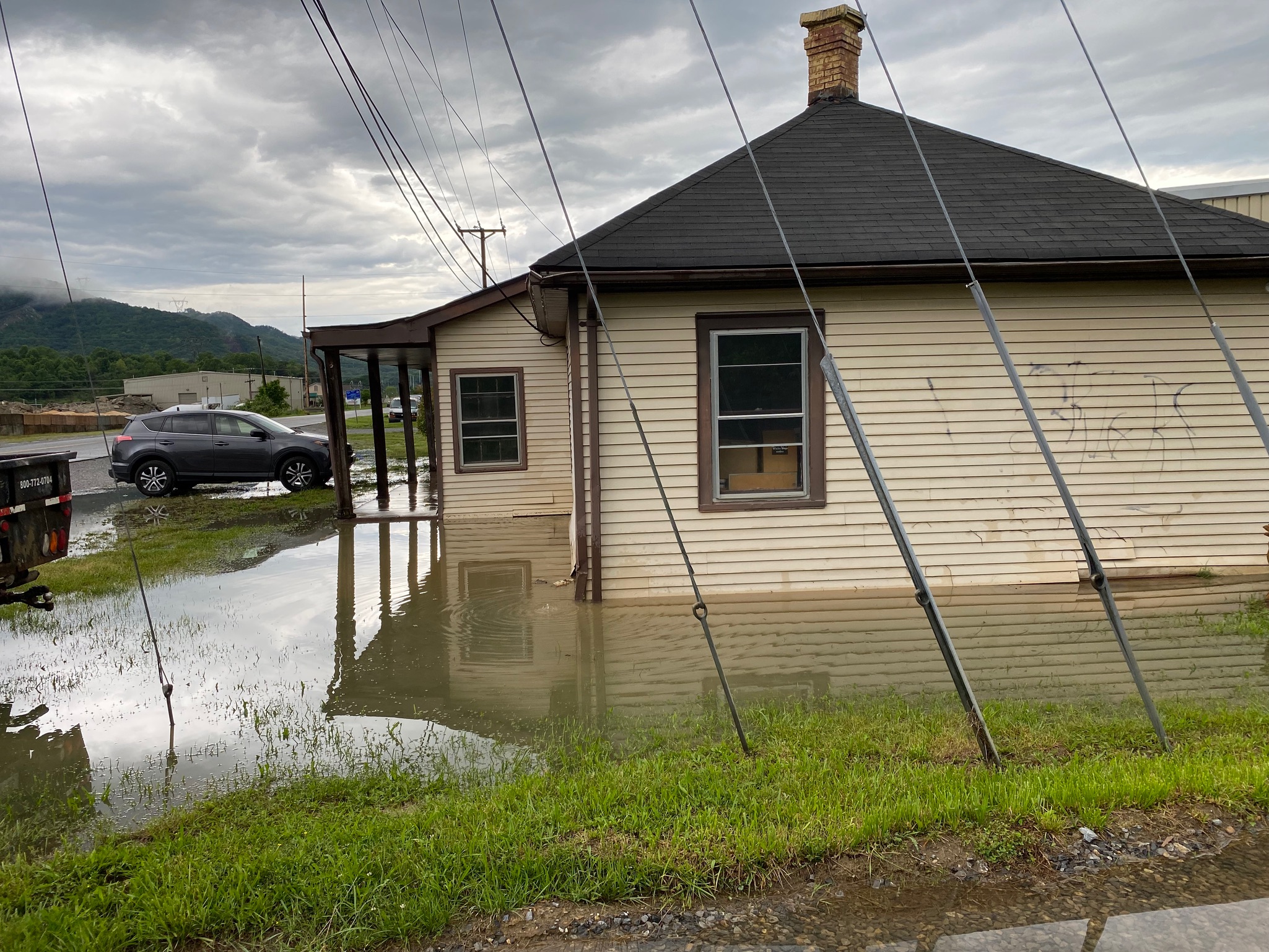
When it comes to foundation problems, most homeowners think of sudden events: flooding, shifting soil, or rapid settlement. But one of the most subtle and underestimated forms of damage happens gradually, over years or even decades. This phenomenon is known as foundation creep — and it’s one of the leading causes of long-term structural distortion in homes.
Foundation creep doesn’t happen overnight. It’s a slow, progressive deformation of materials under constant stress, often without immediate warning signs. But left unaddressed, it can cause serious problems like wall cracks, floor tilting, and structural fatigue.
In this article, we’ll explore what foundation creep is, how it develops, what signs you should watch for, and what professionals can do to halt its progress and restore stability to your home.
🔑 Key Takeaways
- Foundation creep is a slow, permanent deformation of materials under continuous load or stress.
- It commonly affects older homes, especially those built on weak soils or with poor drainage.
- Symptoms include progressive cracking, floor sloping, bowing walls, and door misalignment.
- Unlike settlement or upheaval, creep is gradual — but equally damaging over time.
- Foundation reinforcement and soil stabilization are effective solutions.
What Is Foundation Creep?
In engineering, creep refers to the gradual, time-dependent deformation of a material under a constant load or stress. In residential foundations, this typically means that the soil, concrete, or structural framing is slowly giving way under the weight of the home.
Creep is more common in:
- Homes with clay-rich or soft soils
- Structures exposed to long-term moisture intrusion
- Foundations under constant uneven pressure (such as poor load distribution or slope)
Unlike acute settlement, which might happen after a storm or drought, foundation creep is a slow burn — often going unnoticed until visible damage appears.
What Causes Foundation Creep?
1. Soil Compression Over Time
All foundations apply pressure to the soil beneath them. In compressible or poorly compacted soils, that pressure gradually deforms the soil, leading to subtle but cumulative settlement.
2. Moisture Cycles and Saturation
Repeated wet-dry cycles cause soils to swell and shrink over time, which weakens the soil’s support capacity. Continuous saturation can permanently soften the soil, allowing slow downward movement.
3. Structural Load Imbalance
If a foundation is unevenly loaded — for example, if one side of the house has more weight from rooms, furniture, or additions — that side may begin to deform more rapidly than others.
4. Aging Concrete and Building Materials
Over decades, even the concrete itself can creep — especially if it was poorly mixed, insufficiently cured, or subjected to long-term stress. Wooden framing under constant pressure can also deform slowly.
5. Slope Pressure
Homes built on or near a slope may experience slow downward “creep” of the soil, gradually shifting the foundation with it.
Signs That Foundation Creep May Be Affecting Your Home
Because creep is gradual, many signs may be attributed to “aging” or “settling” — but they’re worth investigating:
| Symptom | Possible Cause |
|---|---|
| Cracks that slowly widen over years | Ongoing structural stress and material deformation |
| Floors that slope more each year | Progressive soil movement or material fatigue |
| Bowing basement walls | Continuous lateral pressure from saturated soil |
| Misaligned or stuck doors/windows | Frame distortion from gradual foundation shifting |
| Separation between walls and ceilings | Differential movement between structural components |
The key with creep is progression. If issues seem to worsen over time without seasonal patterns or sudden triggers, creep could be the culprit.
Why Foundation Creep Is a Serious Problem
1. Harder to Detect Early
Because it develops slowly, homeowners often don’t take action until the damage is significant. Early cracks or tilting may be dismissed as harmless.
2. Affects Structural Integrity
Creep can cause:
- Structural joints to shift or weaken
- Framing members to bend or lose alignment
- Stress fractures in concrete walls or floors
- Chronic water intrusion and air leaks
3. Difficult to Reverse Without Reinforcement
Creep often causes permanent deformation in materials like concrete and wood. While movement can be halted, the structure may require reinforcement or adjustment.
4. Exposes the Home to Other Risks
As foundation creep progresses, it often creates secondary issues, including:
- Cracked exterior finishes (brick, siding, stucco)
- Uneven roofing or framing stress
- Plumbing damage due to line distortion
- Decreased energy efficiency due to gaps and misalignment
How Professionals Diagnose and Address Foundation Creep
Step 1: Structural and Elevation Survey
Foundation repair experts begin by measuring:
- Floor elevations
- Crack patterns
- Wall plumb and bowing
- Moisture levels in surrounding soil
This helps establish a baseline and determine how much creep has already occurred.
Step 2: Identify the Root Cause
Creep is not a stand-alone problem. It’s often driven by one or more underlying conditions:
- Soil instability
- Excess moisture
- Uneven load distribution
- Improper construction or support
Once the root issue is identified, a solution can be designed to halt further movement.
Step 3: Stabilize the Foundation
Depending on the severity and source, solutions may include:
Helical or Push Piers
- Transfer the weight of the home to stable, load-bearing soil deep below the surface.
- Stop further creep caused by soil compression or instability.
Underpinning
- Strengthens the foundation beneath existing footings.
- Often used in areas of poor soil or weak support zones.
Carbon Fiber Reinforcement
- Prevents additional movement in bowing or cracking walls.
- Effective for lateral creep caused by soil pressure.
Slab Jacking (Polyjacking)
- Lifts and stabilizes sagging interior slabs affected by long-term creep or void formation.
Step 4: Correct Moisture Problems
Moisture is often a key driver of creep. Professionals may recommend:
- Drainage improvements (grading, French drains)
- Sump pump installation
- Gutter/downspout extensions
- Soil stabilization or moisture control strategies
Real-Life Example: Decades of Pressure
A homeowner in Lynchburg, VA, had lived in her home for over 30 years. She noticed that a small crack in the living room corner had widened noticeably in recent years, and one side of the dining room floor had become increasingly uneven.
Seal-Tite Basement Waterproofing was called for an inspection and discovered:
- Long-term soil compression on one side of the home
- A slight slope in floor elevation
- Bowing in one basement wall from years of lateral soil pressure
Solution Provided:
- Installed helical piers on the affected side to halt downward creep
- Reinforced the basement wall with carbon fiber straps
- Added yard drainage and extended downspouts to reduce soil saturation
The homeowner was able to restore structural safety and preserve her home’s long-term value without needing full reconstruction.
FAQs: Foundation Creep
How is creep different from settlement?
Settlement can occur suddenly or seasonally. Creep is slow, consistent movement over time due to long-term pressure or material fatigue.
Can creep be reversed?
In most cases, creep-related deformation is permanent. But further movement can be halted with proper stabilization techniques.
What kind of homes are most vulnerable?
- Older homes
- Homes on expansive or compressible soils
- Structures with poor drainage or water management
- Properties built on slopes or fill soil
Is foundation creep dangerous?
Yes — while not as dramatic as sudden failure, it compromises structure over time and can lead to extensive damage if ignored.
Should I fix foundation creep if it’s mild?
Yes. Early action is always more affordable and less invasive than waiting until severe damage occurs.
Conclusion: Time May Be Taking a Toll on Your Foundation
Just because your home’s foundation hasn’t shown dramatic failure doesn’t mean it’s completely stable. Foundation creep is a silent, steady force that can compromise your home’s structure without warning.
The good news? It’s never too late to act. By recognizing the signs early and working with trusted professionals, you can stop creep in its tracks — and reinforce your home for the years ahead.
If you’ve noticed cracks widening slowly, floors sloping more than before, or walls beginning to bow, contact Seal-Tite Basement Waterproofing today. We’ll assess your foundation, diagnose the source of movement, and create a customized solution to restore long-term stability and peace of mind.

Seal-tite Basement Waterproofing Co. is a full service basement environment contractor. We carry an A+ Better Business Bureau rating. We repaired over 40,000 homes and structures in Virginia, West Virginia, Tennessee, and North Carolina. We are fully insured and licensed. We have worked in all types of locations, including residential and commercial locations, government agencies, colleges, hospitals, churches, and condo associations.
Seal-tite® offers a lifetime transferable warranty. We carry a Class A Contractor’s License and we are fully insured. Our satisfied customers range from government agencies to businesses, hospitals, colleges, churches, and thousands of homeowners. Your home is probably the single largest investment you will make in your lifetime. Don’t wait, call Seal-tite® to help make your home dry, safe and livable.

